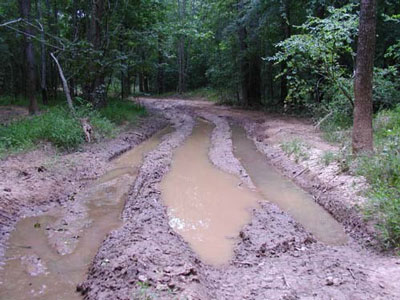
Even more than a hundred years ago, citizens were complaining about roads in this part of Texas, and probably in other areas that received winter snows and rain. Our blackland soil, often referred to as gumbo, is not receptive to all that rain. Mud and standing water are everywhere. I always believe the current year is the worse ever. I definitely do this year.
The City of Greenville is debating a bond election for road repairs where they are terribly needed. Dallas is full of potholes and road repairs. Interstate 30 is almost always in the midst of road repairs somewhere east of Dallas. It is a way of life in the 21st century.
But guess what? As long as Anglos have inhabited this area they have had to cope with mudholes, roads that looked and felt like washboards, and road work done by “volunteer” help. If you owned the land, you or your sons, or your slaves worked the roads. That was a Texas law in the 19th century. Somehow, the Native Americans were savvy enough not to accumulate enough belongings to interfere with travel.
With the introduction of automobiles and trucks in rural areas the winter problems became worse. Hunt County, where I live, had more than 100 small school districts until after World War II. Children had no means to get to the schools. There were some school buses but some students and teachers, like my mother, rode a horse on bad days. Yet, not every family owned a horse or mule. It was really a mess.
Before the First World War civic-minded men formed Good Roads Associations. Their intent was to create a network of decent roads across the United States. Were they worried about school children needing a ride to school or school teachers needing a horse to cross streams? No, the motive behind the move was economics.
Trains had crisscrossed the country side since the 1870s, yet there were great areas that had no rail systems, especially where large farms and ranches were located. It was farmers who needed means to haul cotton to gins, to bring produce to local stores, and to be able to shop in towns. Ranchers found that it was much quicker to move cattle to market by trains, but still had to get the cattle to a railhead going to the nearest slaughter house.
At one time a group of farmers and their families lived in the northeast corner of Hunt County. Years before trees were removed to allow all of the land to be cultivated. Trails led to schools and to town, but during a very wet year, the trails became impassable. The residents had no communication with the outside world. Once the local newspapers learned of the situation, they stirred up the awareness for better roads.
After World War I, many soldiers returned to find no jobs. Newspapers again got busy this time promoting building roads as help for veterans. The vote on March 25, 1919 passed 5,129 to 482, a big turnout and a big majority. At six polling places no votes were against the issue.
However, the Blackland Prairies are a clay-based soil that shifts throughout the year. In the summer the ground shrinks while it expands in winter with all that moisture. Asphalt does not shrink and expand, explaining while we still have roads needing repairs.
